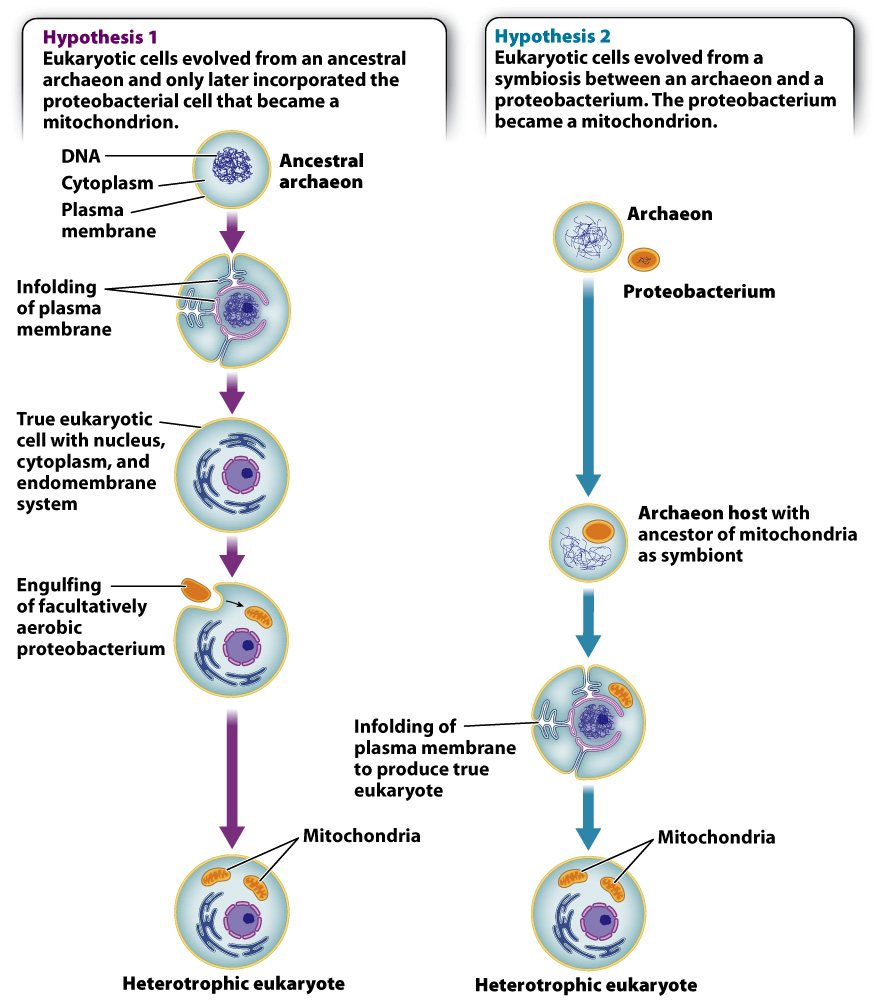Case 5: How did the eukaryotic cell originate?
CASE 5 THE HUMAN MICROBIOME: DIVERSITY WITHIN
If mitochondria originated as proteobacteria and chloroplasts are descended from cyanobacteria, where does the rest of the eukaryotic cell come from? Analysis of the nuclear genome alone provides no clear picture because genes of bacterial, archaeal, and purely eukaryotic origin are all present. As discussed, many nuclear genes originated with the mitochondria and chloroplasts acquired from specific bacteria. However, genes from other groups of bacteria also reside in the eukaryotic nucleus, recording multiple episodes of horizontal gene transfer through evolutionary history. In contrast, some genes are present only in eukaryotes and apparently evolved after the domain originated. Still others, including the genes that govern DNA transcription and translation, are clearly related to the genes of Archaea.
Two starkly different hypotheses have been proposed to explain this mix of genes. Some biologists believe that the host for mitochondrion-producing endosymbiosis was itself a true eukaryotic cell. This cell had a nucleus, cytoskeleton, and endomembrane system, but only limited ability to derive energy from organic molecules (Fig. 27.7). In this view, nuclear genes in Eukarya resemble those of Archaea because the primordial eukaryotic host cell was closely related to Archaea.

FIG. 27.7 Two hypotheses for the origin of the eukaryotic cell. Both hypotheses lead to the evolution of a mitochondrion-bearing protist.
In striking support of this hypothesis, microbiological exploration of hydrothermal vents beneath the Arctic Ocean recently revealed a previously known archaeon whose genome encodes actin-like proteins and other molecules fundamental to cell organization, vesicle trafficking and phagocytosis in eukaryotes. Gene sequence comparisons, in fact, place these novel archaeons as the closest relatives of eukaryotes. An archaeal component of the eukaryotic cell seems assured, but some biologists argue that no eukaryotic cell existed before there were mitochondria. Instead, they propose that the eukaryotic cell as a whole began as a symbiotic association between a proteobacterium and an archaeon (Fig. 27.7). The proteobacterium became the mitochondrion and provided many genes to the nuclear genome. The archaeon provided other genes, including those used to transcribe DNA and translate it into proteins.
Biologists continue to debate these alternatives. Both hypotheses explain the hybrid nature of the eukaryotic genome, but neither fully explains the origins and evolution of the nucleus, linear chromosomes, the eukaryotic cytoskeleton, or a cytoplasm subdivided by ever-changing membranes. There is no consensus on the question of eukaryotic origins—it is one of biology’s deepest unanswered questions, awaiting novel observations by a new generation of biologists. Once a dynamic cytoskeleton became coupled to a flexible membrane system, however, the evolutionary possibilities of eukaryotic form were established.
